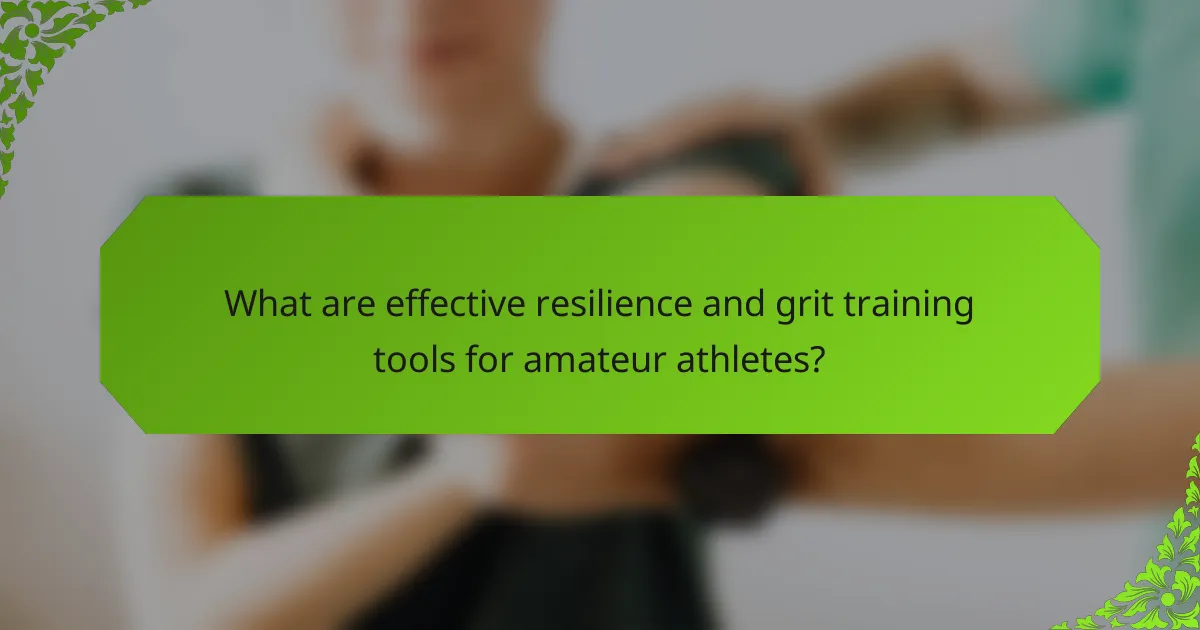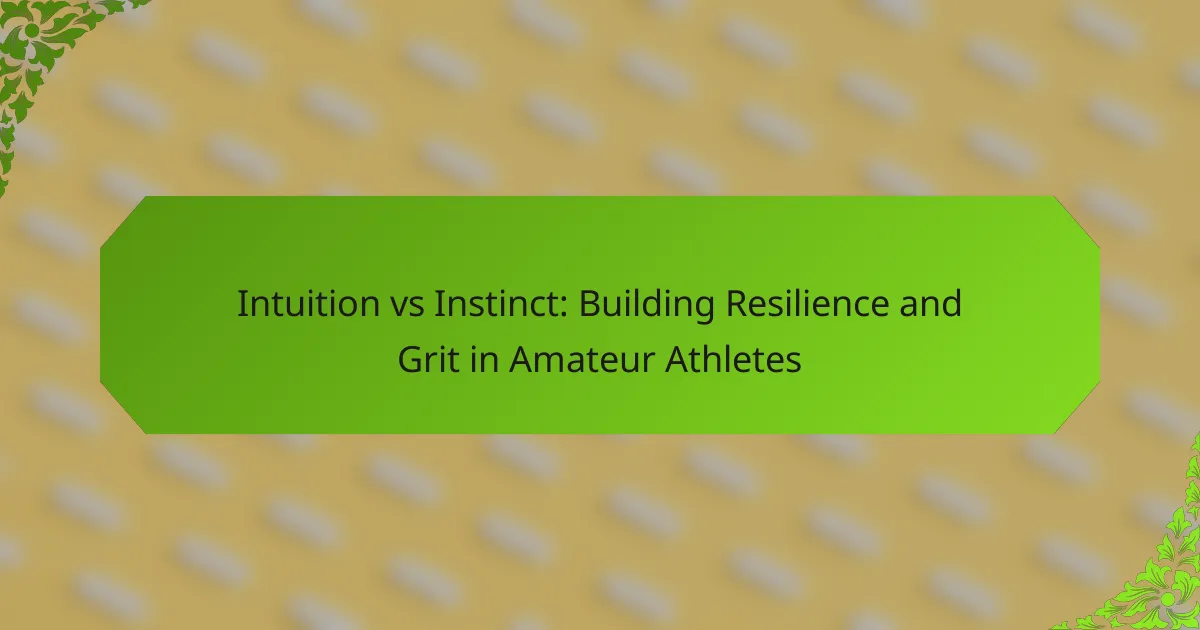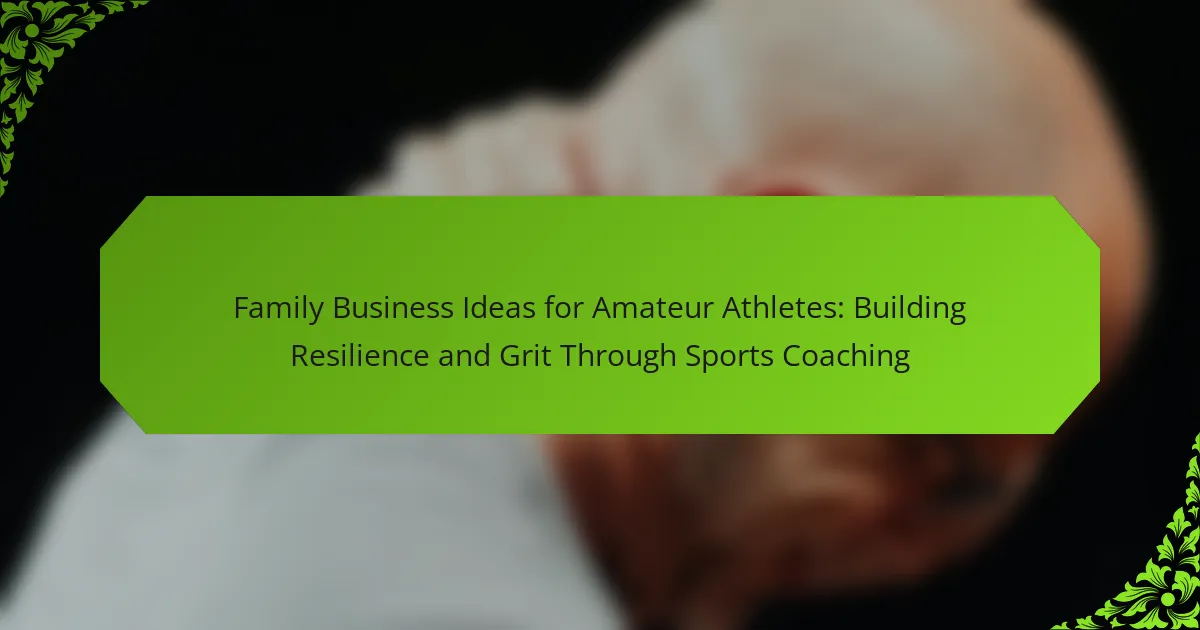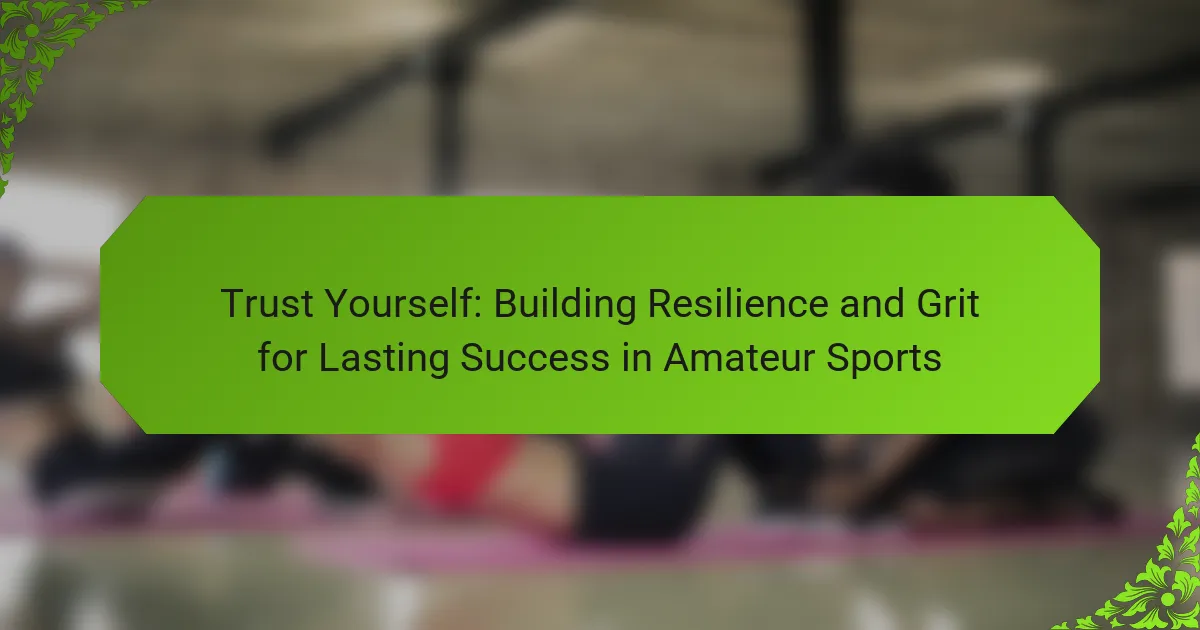Amateur athletes often struggle with mental challenges that can hinder performance. Effective resilience and grit training tools include mental conditioning programs, visualization techniques, and resilience workshops. These strategies enhance mental toughness, improve focus, and foster a positive mindset essential for overcoming setbacks. Research indicates that athletes using visualization can boost their performance significantly.

What are effective resilience and grit training tools for amateur athletes?
Effective resilience and grit training tools for amateur athletes include mental conditioning programs, visualization techniques, and resilience workshops. These tools enhance mental toughness and focus, crucial for athletic performance.
Mental conditioning programs provide structured exercises that build mental strength through challenges and goal-setting. Visualization techniques involve imagining successful performances, which can improve confidence and reduce anxiety. Resilience workshops teach coping strategies and stress management, fostering a positive mindset.
Incorporating these tools can significantly enhance an athlete’s ability to overcome setbacks and maintain motivation. For example, research shows that athletes who practice visualization can improve their performance by up to 10%.
How do resilience and grit impact athletic performance?
Resilience and grit significantly enhance athletic performance by fostering mental toughness and perseverance. These traits enable athletes to overcome challenges, maintain focus, and push through adversity during training and competition. Research shows that athletes with high levels of resilience are more likely to recover from setbacks and stay committed to their goals. Grit, defined as passion and sustained effort, allows athletes to pursue long-term objectives despite obstacles. Together, resilience and grit create a robust framework for success in sports, making training tools that develop these attributes essential for amateur athletes.
What types of training tools enhance resilience and grit?
Training tools that enhance resilience and grit for amateur athletes include mental conditioning programs, goal-setting frameworks, and physical endurance challenges. These tools foster mental toughness, adaptability, and perseverance.
Mental conditioning programs often utilize visualization techniques and mindfulness practices to improve focus and emotional regulation. Goal-setting frameworks help athletes establish clear, achievable objectives, promoting a sense of purpose and motivation. Physical endurance challenges, such as obstacle courses or high-intensity interval training, push athletes beyond their comfort zones, building grit through overcoming adversity.
Incorporating these training tools can result in improved performance and a stronger mindset, essential for long-term athletic success.
What physical tools can be used for resilience training?
Resilience training tools for amateur athletes include physical items that enhance mental toughness and physical endurance. Essential tools are resistance bands, weighted vests, medicine balls, agility ladders, and foam rollers. These tools improve strength, coordination, and recovery, contributing to overall resilience. Resistance bands offer versatility and can be used for strength training. Weighted vests increase body weight during workouts, enhancing endurance. Medicine balls build explosive strength, while agility ladders improve quickness and footwork. Foam rollers aid in recovery, reducing muscle soreness after intense training sessions.
What mental tools are effective for developing grit?
Effective mental tools for developing grit include visualization techniques, goal-setting strategies, and positive self-talk. Visualization helps athletes mentally rehearse success, enhancing motivation and focus. Goal-setting, particularly SMART goals, provides clear benchmarks for progress, fostering a sense of achievement. Positive self-talk reinforces resilience, helping athletes overcome challenges and maintain a growth mindset. These tools collectively enhance perseverance and determination in the face of adversity.
What are the universal benefits of resilience and grit training tools?
Resilience and grit training tools enhance mental toughness and improve performance in amateur athletes. These tools foster perseverance, enabling athletes to overcome challenges and setbacks effectively.
Key benefits include increased self-confidence, which directly impacts performance levels. Athletes who engage in resilience training exhibit better stress management, leading to improved focus during competitions.
Additionally, these tools promote a growth mindset, encouraging athletes to view failures as learning opportunities. This shift in perspective cultivates a more positive approach to training and competition, ultimately enhancing overall athletic development.
Lastly, resilience training can lead to better teamwork and communication skills, as athletes learn to support one another through challenges, creating a more cohesive team environment.
How do these tools improve overall athletic performance?
Resilience and grit training tools enhance athletic performance by fostering mental toughness, improving focus, and increasing adaptability. These tools help athletes overcome challenges, maintain motivation, and sustain effort during training and competition. As a result, athletes can achieve higher levels of performance and consistency.
In what ways do they foster mental toughness?
Resilience and grit training tools foster mental toughness by enhancing focus, building confidence, and promoting adaptability. These tools encourage athletes to embrace challenges, learn from failures, and persist despite setbacks. Techniques like visualization and goal-setting strengthen mental fortitude, enabling athletes to perform under pressure. Additionally, consistent practice of resilience exercises cultivates a growth mindset, essential for long-term success.
What unique features should be considered in training tools?
Unique features in training tools for resilience and grit should include personalized feedback mechanisms, adaptability to various skill levels, gamification elements, integration with performance tracking, social support features, and evidence-based methodologies. These attributes enhance user engagement and effectiveness, making the tools more valuable for amateur athletes.
How do personalization options enhance training effectiveness?
Personalization options significantly enhance training effectiveness by tailoring programs to individual athlete needs. Customized training tools improve engagement and motivation, leading to better outcomes. For instance, adaptive feedback mechanisms provide real-time adjustments, optimizing performance. Additionally, personalized goal-setting aligns with unique resilience and grit levels, fostering a deeper commitment to training.
What role does technology play in resilience training?
Technology enhances resilience training by providing tools that improve mental toughness and adaptability. Digital platforms offer interactive training modules, real-time feedback, and performance tracking. Wearable devices monitor physiological responses, helping athletes understand their stress levels. Virtual reality simulations create immersive experiences for scenario-based training, enhancing grit and determination. These advancements foster a more personalized approach, allowing athletes to tailor their training to individual needs.
What are the rare attributes of elite resilience and grit training tools?
Elite resilience and grit training tools possess rare attributes that enhance their effectiveness. These attributes include personalized feedback mechanisms, which adapt training to individual athlete needs, and integrated mental conditioning modules that focus on psychological resilience. Additionally, they often feature real-time performance analytics, allowing athletes to track progress and adjust strategies dynamically. Another rare attribute is the incorporation of gamification elements, which boost engagement and motivation during training sessions.
How do community support elements influence training outcomes?
Community support elements significantly enhance training outcomes for amateur athletes by fostering motivation and accountability. Supportive environments, such as training groups and mentorship programs, provide emotional encouragement and practical guidance. These elements can lead to improved resilience and grit, essential attributes for athletic success. Studies show that athletes with strong community ties experience higher persistence and better performance metrics, ultimately achieving their goals more effectively.
What innovative practices are emerging in resilience training?
Emerging practices in resilience training focus on mental conditioning, adaptive strategies, and technology integration. Techniques like mindfulness, cognitive-behavioral approaches, and virtual reality simulations are gaining traction. These innovations enhance athletes’ psychological toughness and coping mechanisms. As a result, amateur athletes can better manage stress and improve performance under pressure.
How can amateur athletes integrate these tools into their routines?
Amateur athletes can integrate resilience and grit training tools by incorporating them into daily routines and practice sessions. Start with goal-setting tools to define clear objectives. Use visualization techniques to enhance mental toughness during training. Implement resilience-building exercises, such as challenging workouts, to foster grit. Lastly, track progress with apps or journals to maintain motivation and accountability.
What are the best practices for using resilience tools effectively?
To use resilience tools effectively, establish clear goals and integrate them into training routines. Focus on consistency, tracking progress, and adapting techniques to individual needs. Utilize a variety of tools, such as visualization and positive self-talk, to enhance mental strength. Engage in regular reflection to assess the effectiveness of these tools and make necessary adjustments.
What common mistakes should athletes avoid when training for grit?
Athletes should avoid common mistakes like neglecting recovery, overtraining, and lacking a structured plan. Failing to set specific goals can hinder grit development, as can ignoring mental conditioning. Additionally, not tracking progress may lead to stagnation. Emphasizing consistency and adaptability is crucial for building resilience.
What expert insights can help maximize training tool effectiveness?
To maximize training tool effectiveness for resilience and grit in amateur athletes, focus on personalized approaches. Tailoring tools to individual needs enhances engagement and results. Incorporate feedback mechanisms to adjust training plans based on athlete performance. Utilize data analytics to track progress and identify areas for improvement. Regularly update content to reflect the latest research on resilience training. Offer diverse formats, such as interactive workshops and online resources, to cater to different learning styles.



